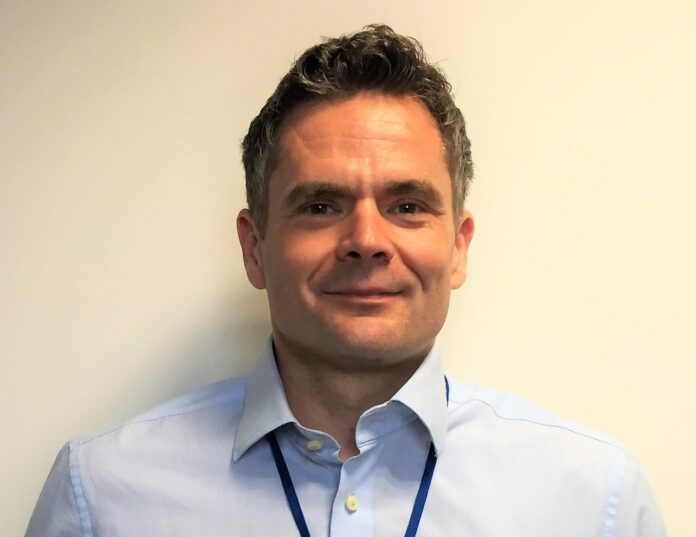With the development of smart devices, 3D printing, robotics, AI, 5G, quantum computing and the Internet of Things, day-to-day work in manufacturing is continually evolving. That means the demand for physical labor is decreasing, while the need for science, technology, engineering and mathematics (STEM) professionals is seeing an uptick. However, with a 2022 that saw an increasing number of lay-offs across AM companies – especially in the US, we were keen to discover what this market is headed from a recruitment firm’s standpoint. In case you didn’t notice that, recruitment in this industry is as passionate and driven as AM, hence the increasing number of specialized firms that pop up on the market.
For this topic, we caught up with Kensington Additive, a division of Kensington Consulting Ltd, established in 2014 that exclusively focused on the Additive Manufacturing Market.
Just like manufacturing companies, that have a long-standing expertise in a conventional manufacturing process, decide to enter the AM market to diversify their offering, Kensington debuted on the AM market about eight years ago, after successfully placing a “Global Head of AM” position for one of their long standing clients. This was the turning point that made them realize the collaborative approach and demand for talent in the industry. Since then, they are on a mission to hiring the “world’s best talent”. To do so, the company aims to act as “a bridge in supporting EMEA/APAC businesses grow in North America and also supporting US businesses expand across the Pond”.
With the main areas of focus being Europe and the United States, “we recruit disciplines covering C-Suite, Sales & Marketing, Software, Design for AM, Field Service, Engineering, R&D, Materials including metallurgy, and production operations. An interesting observation is that we find a lot of our clients are now also looking for candidates outside of the AM industry as the market evolves where skills are more mature such as Quality, RA and Supply Chain”, Phillip Hodson, Co-Founder and CEO of Kensington Additive told 3D ADEPT Media.
A 2022 labour market marked by a high number of layoffs
 According to layoffs.fyi, over 964 tech companies have already laid off over 149876 employees in 2022. In the AM industry, the likes of Desktop Metal, Fast Radius, Nexa3D, Xerox and Carbon have laid off a great number of people.
According to layoffs.fyi, over 964 tech companies have already laid off over 149876 employees in 2022. In the AM industry, the likes of Desktop Metal, Fast Radius, Nexa3D, Xerox and Carbon have laid off a great number of people.
For those that are publicly listed companies, needless to say that with those lay-offs, their stock responded to these changes and so does the reaction of new and potential investors they are targeting. But this is certainly a minor information for you when we look at the number of people who are currently “open to work” – as LinkedIn’s statuses would notify. Guess what, if you are looking to understand the “why” of this wave of lay-offs, maybe this information is not meaningless after all. For Phillip Hodson, there is a number of different PESTEL factors (Political, Economic, Sociological, Technological, Legal and Environmental):
“Even though the market for people continues to grow, obviously company lay-offs in our industry can be caused by many different PESTEL factors. We have seen some companies overestimate demand for their products, some companies ran out of funding and others have struggled with the challenges of growth too soon too quickly. This has affected everyone from OEMs to resellers as we move into 2023, it is clear that economic factors will have some impact on certain companies’ growth plans.
The AM industry is a market driven by a lot of start-up companies promising the next breakthrough technology or material, naturally some will work, and some won’t.”
Kensington may be right but might forget something. In addition to this economic uncertainty, other arguments may explain this storm in the AM labour market: pressure from investors, maturity of the company/industry, or an ingrained stereotype that lay-offs increase profitability.
Indeed, lay-off threats become more real as investors push for job cuts to lessen expenses. Could we envision the idea that investors become more concerned that companies will be less profitable? On another note, for big corporations, and in an uncertain economy, there is this idea that lay-offs often equate with profitability. As for the company’s maturity, it’s understandable for a young tech company not to have “a lot” of customers, but when most companies laying off employees are big organizations, this makes me question the maturity of the industry. Is it not stable enough to withstand this economic crisis?
Most importantly, how does this crisis affect candidates who are now looking for a job?
“The learning points from this is to prepare our candidates, so they are asking, searching questions at interview around funding, attrition and the reasons for this, understanding how their hiring plans feed into their long term strategies, and what progression routes does this role have in order to understand the future a little more. Providing consultative focus with candidates is key to our reputation. In terms of start-ups, as a candidate we would advise to consider the track record of investors, the Burn Rate and whether the start-up has customer orders yet or if not, business having customers investing in the company sometimes provides a good sense of the validity of longevity. Timing is also key and whether or not there is good business user cases evident” Hodson notes.
Understanding the current demand for talent in the AM industry
Despite this tumultuous labour market, recruitment firms remain optimistic about the skills gap which is gradually decreasing. Unlike three years ago, more and more universities, as well as colleges have globally adopted AM specific courses and encourage AM topics to be taught and built into curriculars across the board.
“The ability to demonstrate the advantages of making things in a different way coupled with the relative ease of having a print lab means academia has embraced AM and provided courses and facilities to increase education of AM. This has led to an increase in graduates with AM skills for sure and this has gone some way to filling entry level gaps in skills. Despite the increase of seeing more graduates within the AM space and students being exposed to Additive Manufacturing studies, there is still a shortage of skills in the industry. However, we have supported many businesses in seeing the advantage of hiring from complimentary industries to fill this gap. Role specific dependent, sourcing skills from sectors such as specialty metals, CNC, metrology or robotics go some way in solving some companies talent challenges. AM is an ever-evolving market place and as such there will always be a skills gap given the nature of the industry”, Hodson comments.
In this vein, when asked the types of profile that were most sought after, and the types of companies that have recruited the most, Kensington Additive’s CEO explains:
“In 2022 we saw a diverse range of roles within the AM space. Software continues to be an in-demand requirement, as there is a high requirement for software engineers across all industries with specific exposure to the hardware side (not solely data or front-end software) to interact with 3D printers for printer control. Although some 3D printers work on basic scripting languages such as Python, they still require experience with C++ or similar complex languages.
We have seen an increase in the need for Application Engineers as businesses see this being pivotal in increasing adoption and proving more user cases. Furthermore, Field Service Engineers are also in high demand as the number of machines installed increases and customer success becomes key. We saw a diverse range regarding the type of companies that hire the most AM specific disciplines from startups, materials companies, OEMs, Software providers, service bureaus and more. The regions we saw the highest demand from continue to be USA, Germany, France and Netherlands.”
From our conversations at Formnext, we learned that companies are increasingly looking to find people that can enhance their supply chains, operations and QC activities. Moving forward, Kensington foresees a year that will be marked by a high demand from vertical industries (Medical, Aerospace, Space, Housing, Industrial etc.) adopting AM technologies.
“Some companies will have hiring freezes, however investor-backed companies that have strong application business cases, strong customer demand, good timing and the right people in place will continue to hit key milestones of growth in 2023. Clearly, there are some employers that are going to be holding back on hiring next year for the first one or two quarters – they seem to be larger mature organizations that operate in specific verticals. Despite this, we also know many others that have strong hiring plans and we have no doubt [they] will achieve their growth plans in 2023”, Hodson concludes.
This interview has first been published in the November/December edition of 3D ADEPT Mag.






